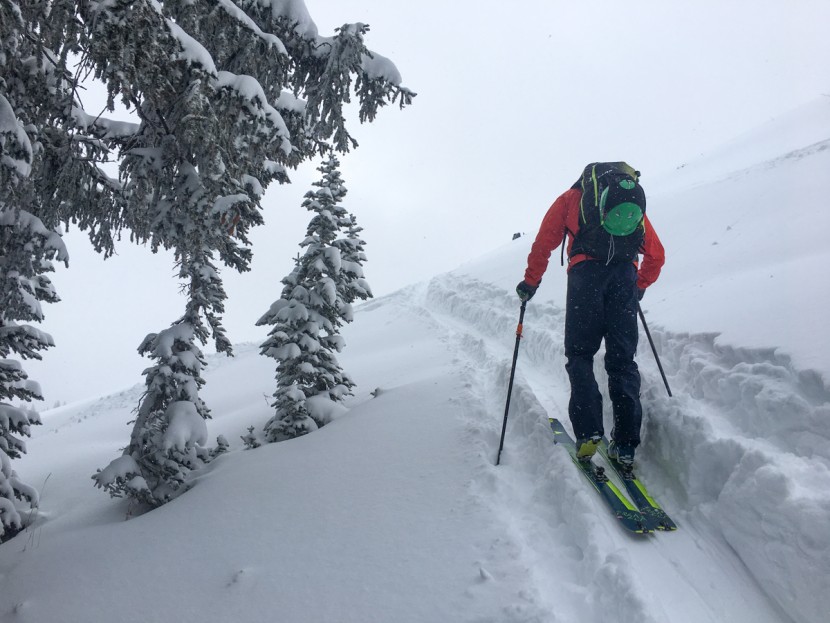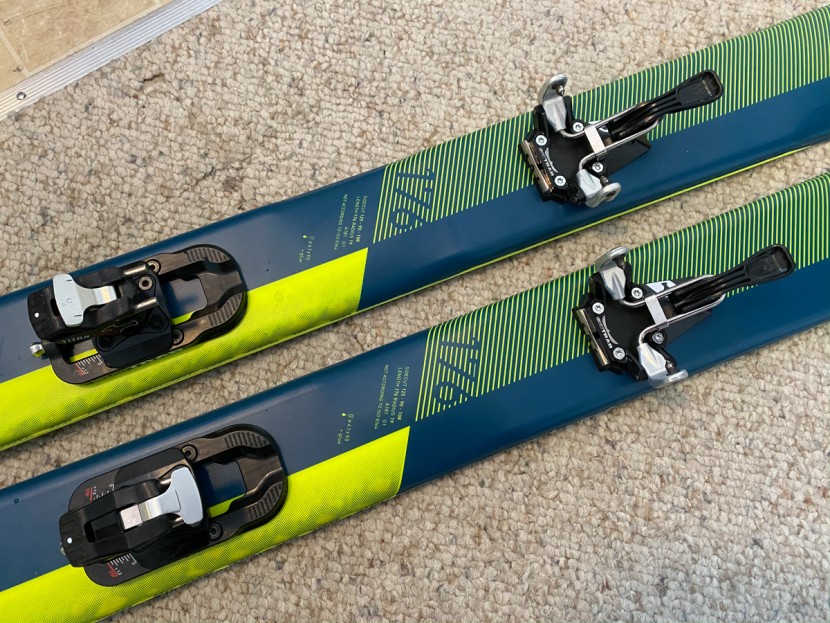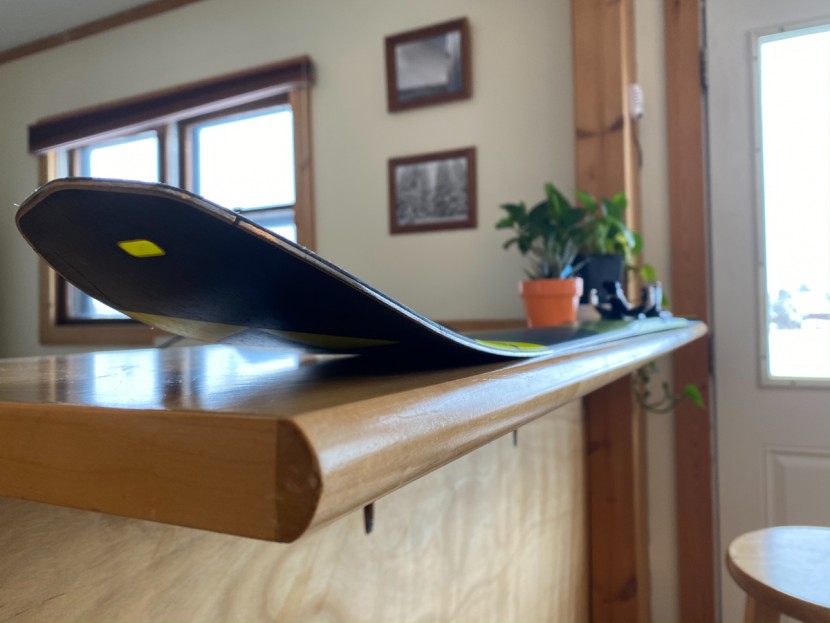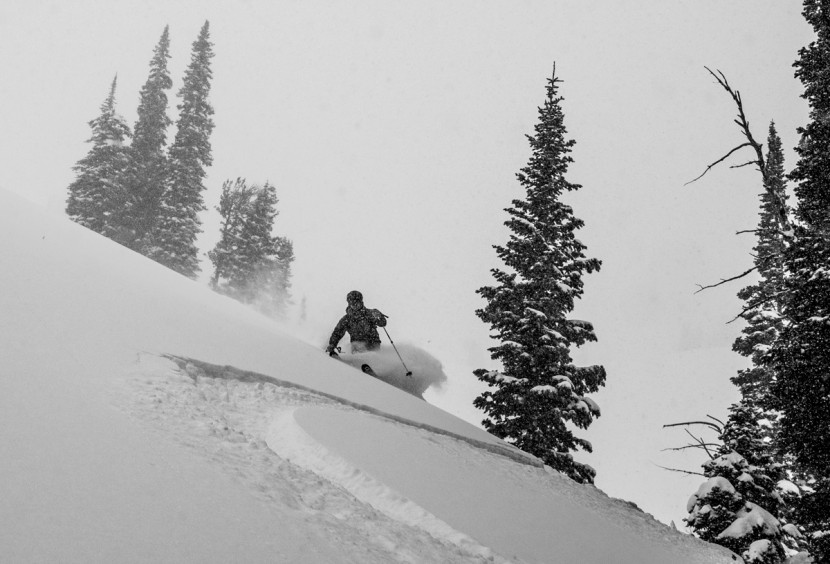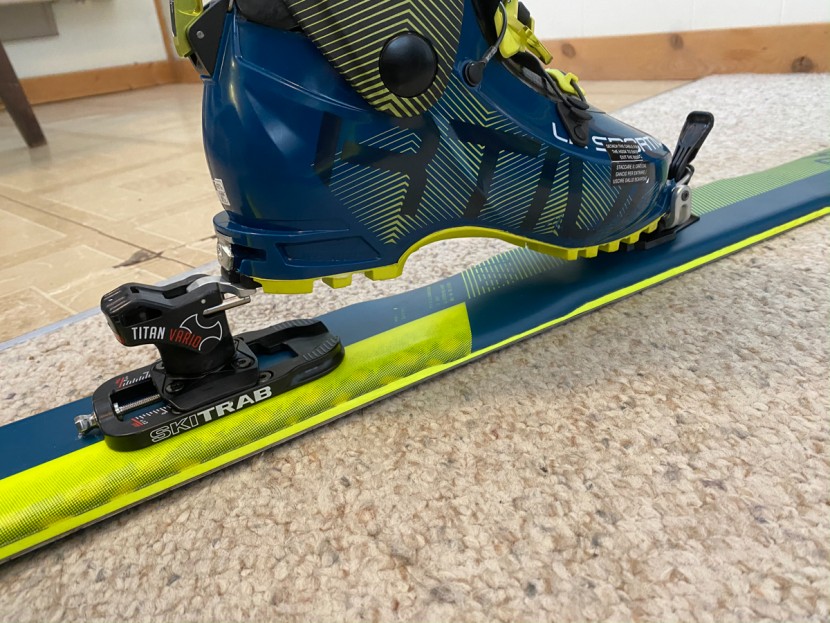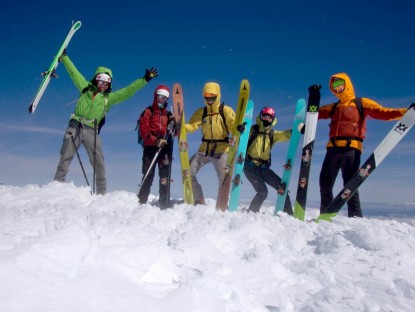The latest Transalp 90 Carbon is pictured above, and we are linking to it in this review.
December 2020Fischer Transalp 90 Carbon Review
Our Verdict
Our Analysis and Test Results
The Transalp 90 Carbon is Fischer's widest in their Transalp series, and this line of skis is lightweight and “European” in tone. The Transalp 90 is something you'd see on any old Austrian weekend ski tourer. Here in the US, it is a lightweight, steep-and-firm specialist. These are exactly what we would choose for an April Eastern Sierra couloir road trip or May NW volcano shredding. In these situations, you could go even narrower, but you are likely to be intimidated and turned off by such a strategy. The Transalp 90 is a spring, narrow ski for those reluctant to go truly light and narrow.
Weight
The Transalp 90 weighs 5.7 lbs for the pair. We tested their “176 cm” size and measured them to be 175cm. In this size range, the skis are actually mid- to heavy-weight. You can certainly get skis with this surface area that are considerably lighter. Our proprietary (but repeatable and clearly communicated, in the How We Test Backcountry Skis article) weight-to-surface-area calculation yields .68 g/cm^2. One of our award winners, and many others in the market, equal or better this number with larger surface area. The end result is that the Transalp 90 skins like a lightweight ski because it is narrow and further reduces weight with associated light skins, but skis downhill on firm and funky snow like something bigger.
Stability at Speed
No touring skis will shred downhill with the confidence of metal-filled resort skis. You can't get around that. All our stability comparisons are calibrated against only touring skis. When we examine stability, we get into both steep terrain and very high-speed skiing. In these situations, provided the snow is reasonable in predictability, the Transalp does ok. We intentionally tested a relatively short ski. For soft snow touring, our test team prefers skis just over 180cm. For firm snow, we like shorter skis. We sized the Transalp for firm snow, at 176cm. For weight and firm snow, the shorter length is an asset. For stability, it is a liability. We can handily extrapolate that the Transalp would be even more stable in the next size up.
Firm Snow
Here this ski excels. Hand-flex tests show that the Transalp is quite rigid. On-the-snow testing, on mainly early season drought hardpack, demonstrates that the edges hold tenaciously. It is for firm snow that you select the Transalp 90. Others might do even better, but not by much. Many, many popular and trendy backcountry skis ski firm snow much more poorly than the Transalp 90. We love soft snow, but the reality of backcountry skiing is often firmer than Instagram and films suggest. Aspire to ski only powder, but realize that you'll get out a ton more often if you are open to riding the hard stuff between mega storms and seasons. For those conditions, the Transalp 90 excels.
Powder
You might jump up and conclude that powder performance is diametrically opposed to firm snow performance. We haven't found that to be true. We love powder skiing for many, many reasons. One of those reasons is that, once one understands the basic techniques, powder skiing is forgiving of lapses and enjoyable on all kinds of equipment. Truly excellent powder snow is enjoyable on all modern backcountry skis. In an amazing recent binge of mid-winter Teton powder conditions, our test team has gotten more human-powered untracked skiing on tester skis than some might get in a lifetime. It caused no consternation to take out the Transalp 90 on any of these perfect powder days.
The smaller and lighter construction simply means that we had more energy for more laps and more downhill skiing. Light skis are great powder skis because you can ski more powder! With good snow and centered technique, the Fischer pops up out of powder turns. In faster, shallower conditions, we could even ski in a modern, lateral, smearing fashion on these ski mountaineering specialists. Usually we expect narrower skis to demand “old school” up-un-weighting sort of technique in powder snow. This was best in the deep stuff, but when it got boot top the best skiers in our test could carve and smear with the Fischer.
Crud/Poor Snow
Here smaller skis suffer. There is no way around it. Girth and mass (mainly mass) help in tougher snow conditions. Tracked up snow, heavy stuff, and breakable crust demand the very best of ski and skier. The size and mass of the Transalp makes it ski better than our tiniest Top Pick winner, but not by much. As the snow conditions get tougher and tougher, everyone and every pair of skis will have to eventually revert to “survival” techniques like stem and wedge turns and big traversing lines. Where, when, and for how long that is required is a function of ski attributes and skier technique. On that continuum, the Fischer requires survival skiing sooner than most, but not as often as a specialized subset of tested skis.
Value
The Transalp 90 Carbon is pretty average in cost. As a slightly more specialized tool, its value is more compromised than others. Either your backcountry ski patterns lean toward the high and firm (East Coast? High Sierra? Alps? Springtime anywhere), or you will choose these skis as a complement to your other backcountry skis. If you are one of those that can “get away” with these as your only skis, the value is good. They're not prohibitively expensive, and the construction will hold up to an average amount of use and abuse.
Conclusion
These are the smallest and lightest skis we might recommend to anyone as their “quiver of one”. If your general backcountry ski patterns lean in the firm, high, and vernal direction, the Fischer Transalp 90 is great. If you seek (and actually find) weeks and months of soft-snow powder backcountry skiing each season, go at least a little bigger than the Transalp 90.



